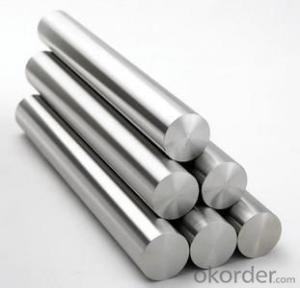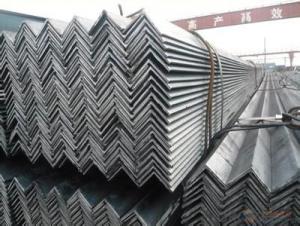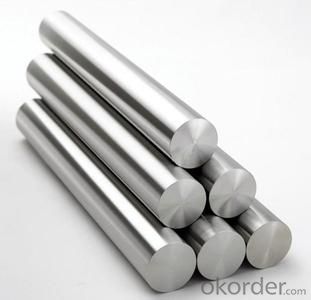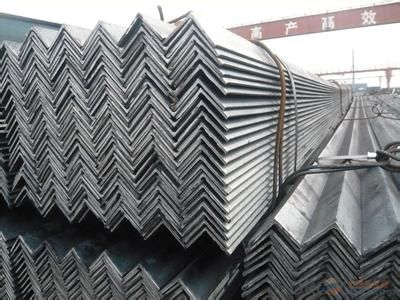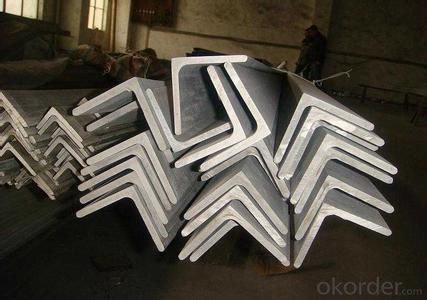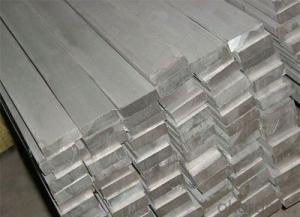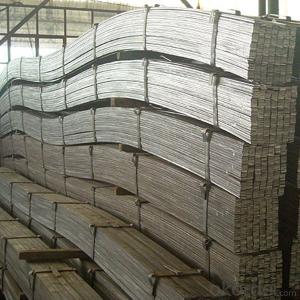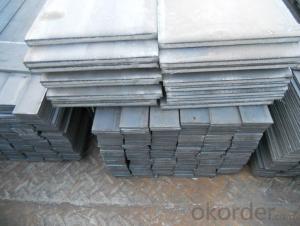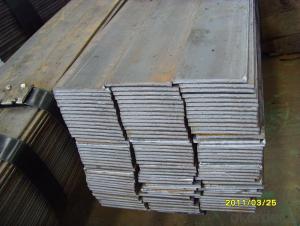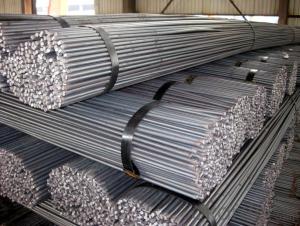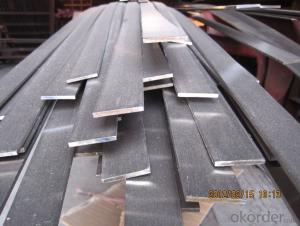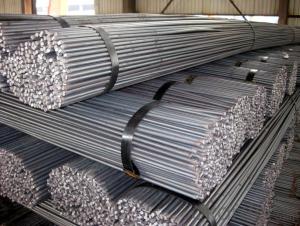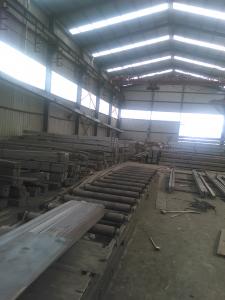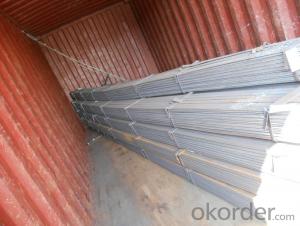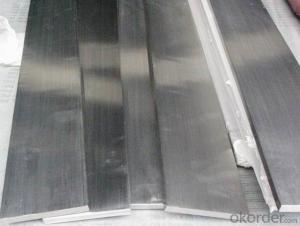Flat Bar 3mm-30mm Hot Rolled High Quality GB Q235
- Loading Port:
- China Main Port
- Payment Terms:
- TT or LC
- Min Order Qty:
- 25 m.t.
- Supply Capability:
- -
OKorder Service Pledge
OKorder Financial Service
You Might Also Like
Product Description:
OKorder is offering high quality Hot Rolled Steel I-Beams at great prices with worldwide shipping. Our supplier is a world-class manufacturer of steel, with our products utilized the world over. OKorder annually supplies products to European, North American and Asian markets. We provide quotations within 24 hours of receiving an inquiry and guarantee competitive prices.
Product Applications:
According to the needs of different structures, Angle can compose to different force support component, and also can be the connections between components. It is widely used in various building structures and engineering structures such as roof beams, bridges, transmission towers, hoisting machinery and transport machinery, ships, industrial furnaces, reaction tower, container frame and warehouse etc
Product Advantages:
OKorder's Steel I-Beams are durable, strong, and resist corrosion.
Main Product Features:
· Premium quality
· Prompt delivery & seaworthy packing (30 days after receiving deposit)
· Corrosion resistance
· Can be recycled and reused
· Mill test certification
· Professional Service
· Competitive pricing
Product Specifications:
Manufacture: Hot rolled
Grade: Q195 – 235
Certificates: ISO, SGS, BV, CIQ
Length: 6m – 12m, as per customer request
Packaging: Export packing, nude packing, bundled
Sizes: 25mm-250mm | ||||||||||||
a*t | ||||||||||||
25*2.5-4.0 | 70*6.0-9.0 | 130*9.0-15 | ||||||||||
30*2.5-6.6 | 75*6.0-9.0 | 140*10-14 | ||||||||||
36*3.0-5.0 | 80*5.0-10 | 150*10-20 | ||||||||||
38*2.3-6.0 | 90*7.0-10 | 160*10-16 | ||||||||||
40*3.0-5.0 | 100*6.0-12 | 175*12-15 | ||||||||||
45*4.0-6.0 | 110*8.0-10 | 180*12-18 | ||||||||||
50*4.0-6.0 | 120*6.0-15 | 200*14-25 | ||||||||||
60*4.0-8.0 | 125*8.0-14 | 250*25 | ||||||||||
FAQ:
Q1: How do we guarantee the quality of our products?
A1: We have established an advanced quality management system which conducts strict quality tests at every step, from raw materials to the final product. At the same time, we provide extensive follow-up service assurances as required.
Q2: What makes stainless steel stainless?
A2: Stainless steel must contain at least 10.5 % chromium. It is this element that reacts with the oxygen in the air to form a complex chrome-oxide surface layer that is invisible but strong enough to prevent further oxygen from "staining" (rusting) the surface. Higher levels of chromium and the addition of other alloying elements such as nickel and molybdenum enhance this surface layer and improve the corrosion resistance of the stainless material.
Q3: Can stainless steel rust?
A3: Stainless does not "rust" as you think of regular steel rusting with a red oxide on the surface that flakes off. If you see red rust it is probably due to some iron particles that have contaminated the surface of the stainless steel and it is these iron particles that are rusting. Look at the source of the rusting and see if you can remove it from the surface.
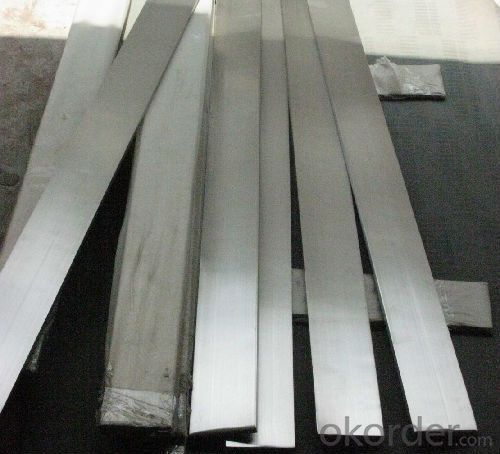

- Q: What is the difference between 60X6 and 50X4 flat steel in grounding?
- The contact resistance varies with the return current.
- Q: Can steel flat bars be used for making heat exchangers or cooling systems?
- Heat exchangers or cooling systems can utilize steel flat bars. Steel is widely used and versatile in many industries, including HVAC systems. The advantages of steel flat bars include high strength, durability, and excellent thermal conductivity, which make them suitable for heat transfer applications. In heat exchangers and cooling systems, heat is transferred between fluids or between a fluid and the surrounding environment. To facilitate efficient heat transfer, steel flat bars can be shaped and sized accordingly to form the necessary framework and surfaces. They can be made into fins, tubes, or plates to maximize surface area and enhance heat dissipation. Moreover, steel flat bars can withstand high temperatures and pressures, making them ideal for demanding heat exchange applications. They are also resistant to corrosion, ensuring optimal performance and longevity, especially when exposed to different fluids or environments. However, it is important to consider various factors, such as the specific application, operating conditions, and budget, when choosing materials for heat exchangers or cooling systems. Depending on the requirements, other materials like copper, aluminum, or stainless steel may also be viable options.
- Q: How do steel flat bars perform in extreme weather conditions?
- Steel flat bars generally perform well in extreme weather conditions. Due to their high strength and durability, they can withstand extreme temperatures, harsh winds, heavy rainfall, and even snow. However, it is important to note that prolonged exposure to corrosive environments, such as high salt concentrations or acidic conditions, can lead to rusting and degradation over time. Regular maintenance and proper protective coatings can help mitigate these effects and ensure optimal performance in extreme weather conditions.
- Q: Is the earthing electrode made of galvanized flat steel or bare copper wire?
- The combination of conductors or conductors that are buried in the earth so as to connect with the earth is called a ground electrode. The grounding electrode is the electrode which is in full contact with the ground and realizes the connection with the earth. In the electrical engineering, the grounding electrode is made of a plurality of 2.5M long, 45X45mm galvanized steel angles, and is nailed at the bottom of the 800mm deep groove, and then is drawn out with the lead out line.
- Q: Can steel flat bars be used in the manufacturing of HVAC systems?
- Certainly! HVAC systems can utilize steel flat bars in their manufacturing process. Steel is widely employed in HVAC systems owing to its robustness, durability, and ability to withstand corrosion. The utilization of steel flat bars extends to numerous HVAC components, including brackets, supports, and frames. These bars offer stability and bolster the system, guaranteeing its optimal operation. Furthermore, steel flat bars can be easily tailored and fabricated to meet precise design specifications, rendering them suitable for diverse HVAC system configurations.
- Q: What is the difference between flat steel and steel strip?
- Steel strips generally refer to sheet metal, and flat steel generally refers to medium and heavy plateFlat steel hot rail and cold drawn
- Q: What is the difference between carbon steel and mild steel flat bars?
- Carbon steel and mild steel flat bars are both types of steel that are commonly used in construction and manufacturing. However, there are some key differences between the two. One major difference is the carbon content. Carbon steel contains a higher amount of carbon, typically ranging from 0.30% to 1.70%, while mild steel has a lower carbon content, usually around 0.05% to 0.25%. This higher carbon content in carbon steel gives it greater strength and hardness, making it more suitable for applications where high strength and durability are required. Another difference is the level of impurities present in the steel. Mild steel has fewer impurities, which makes it more malleable and easier to work with. It can be easily welded, formed, and machined, making it a popular choice for many manufacturing processes. Carbon steel, on the other hand, may contain higher levels of impurities, which can make it more difficult to work with and require more specialized tools and techniques. The final difference is the cost. Mild steel is generally less expensive than carbon steel. This is because mild steel has a lower carbon content and fewer impurities, which makes it easier to produce and more widely available. Carbon steel, on the other hand, requires more processing and refining, making it more expensive. In summary, the main differences between carbon steel and mild steel flat bars are the carbon content, impurity levels, and cost. Carbon steel has a higher carbon content and may contain more impurities, giving it greater strength and hardness. Mild steel has a lower carbon content and is more malleable and easier to work with. Additionally, mild steel is generally less expensive than carbon steel.
- Q: Can steel flat bars be used in the construction of railways?
- Yes, steel flat bars can be used in the construction of railways. Steel is a common material used in railway construction due to its strength, durability, and resistance to wear and tear. Steel flat bars are often used as support structures, such as track sleepers or ties, to provide stability and support to the railway tracks. These flat bars are designed to withstand heavy loads and provide a sturdy base for the tracks, ensuring smooth and safe rail transportation. Additionally, steel flat bars can also be used in the construction of railway bridges, platforms, and other infrastructure that require strong and reliable materials. Overall, steel flat bars are a suitable choice for railway construction due to their high strength and ability to endure the demanding conditions of railway operations.
- Q: Are steel flat bars available in different surface hardness options?
- Indeed, there is a variety of surface hardness options for steel flat bars. The surface hardness of a steel flat bar depends on the heat treatment it undergoes during manufacturing. By utilizing heat treatment techniques like quenching and tempering, different levels of hardness can be achieved on the steel's surface. These levels of hardness are typically assessed using the Rockwell hardness scale, with higher values denoting increased hardness. In industries such as construction, manufacturing, and engineering, steel flat bars with varying surface hardness options are widely employed to meet specific hardness requirements for their intended applications.
- Q: How do steel flat bars compare to brass flat bars?
- Different applications require the use of steel flat bars and brass flat bars because they possess distinct characteristics and properties. Steel flat bars are renowned for their exceptional strength and durability. They are typically crafted from carbon steel, which grants them high tensile strength and the ability to endure heavy loads and impacts. Furthermore, steel flat bars exhibit resistance against rust and corrosion, rendering them suitable for outdoor or industrial purposes. They find common employment in construction, manufacturing, and engineering ventures that necessitate structural support and reinforcement. On the contrary, brass flat bars offer unique benefits owing to their composition. Brass, an alloy of copper and zinc, presents a distinct golden hue and a high level of malleability. Brass flat bars are recognized for their excellent conductivity and are thus well-suited for electrical and plumbing applications. They frequently contribute to the production of electrical connectors, fittings, and ornamental elements. Additionally, brass possesses antimicrobial properties, making it a favored option when hygiene is of utmost importance, such as in hospitals or food processing facilities. Regarding cost, steel flat bars are generally more economical than brass flat bars. Steel is abundantly available and less expensive, while brass is deemed a specialized metal that necessitates additional processing and refinement. In conclusion, the choice between steel and brass flat bars hinges on the specific requirements of the project. If paramount considerations include strength, durability, and resistance to rust, steel flat bars represent the preferable selection. Conversely, if electrical conductivity, malleability, and antimicrobial properties hold significance, brass flat bars emerge as the superior option.
Send your message to us
Flat Bar 3mm-30mm Hot Rolled High Quality GB Q235
- Loading Port:
- China Main Port
- Payment Terms:
- TT or LC
- Min Order Qty:
- 25 m.t.
- Supply Capability:
- -
OKorder Service Pledge
OKorder Financial Service
Similar products
Hot products
Hot Searches
Related keywords
